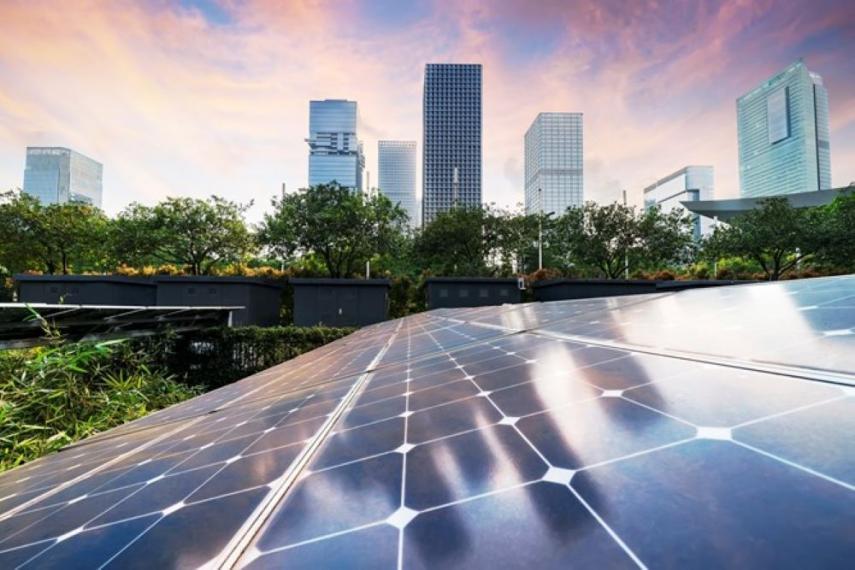Climate Models Help Build Sustainable Cities

Updated U of G simulation platform results in more accurate urban climate predictions.
Welcome to the city, where asphalt streets, office towers, and tarred roofs have replaced natural areas. An “Urban Heat Island” can be the result, with temperatures and energy usage increasing, more pollution, and people at risk from extreme heat and threats to drinking water. To develop sustainable cities, planners need tools to assess and predict physical processes occurring in the urban environment.
Simulating the Urban Climate
A team of University of Guelph (U of G) researchers, including Dr. Amir Aliabadi, Associate Professor in the School of Engineering; Dr. Moshen Moradi (former PhD candidate in the School of Engineering); and Dr. Scott Krayenhoff, Assistant Professor in the School of Environmental Sciences, have developed an urban micro-climate model that will help. Such models are mathematical representations of the environmental impact of urban development. To effectively simulate the urban climate, models must accurately represent exchanges of momentum, heat, and water between the atmosphere and the artificial and natural surfaces that exist within cities.
The U of G-created Vertical City Weather Generator (VCWG) is a microclimate model that enables computers to predict variation in climate variables within cities, such as temperature, wind speed, and humidity, and building performance metrics, such as cooling/heating loads, natural gas consumption, and electricity consumption.
Version 2.0.0
Earlier versions of VCWG enabled basic simulations of urban climate variables and building performance metrics (v1.3.2) and renewable energy utilization for buildings (v1.4.4). The researchers have recently released version 2.0.0 of the VCWG. This updated version incorporates hydrological processes such as precipitation, evaporation, flooding, leakage, and the flow of water on surfaces. The refined mathematical model driving the simulation consists of six integrated submodels used to predict climate and surface variables, as well as energy performance metrics of buildings, within an urban area from ground level all the way up to multiple times the average building height.
The researchers evaluated their model against real-world datasets from Basel, Switzerland and Vancouver, Canada. They also assessed the model results relative to seasonal variation, ground vegetation, and the effects of green and cool roofs. The team found that their refined model outperformed previous versions and that the inclusion of a hydrology model resulted in more accurate predictions of urban climate variables.
“Our Vertical City Weather Generator can be used to predict how urban climate variables are influenced by environmental conditions and different urban configurations,” says Aliabadi. “In future, we can integrate other submodels and assess the model’s accuracy in relation to extreme meteorological events.”

Overall Schematic of the Vertical City Weather Generator (VCWG) simulation program and its sub-models.
This work was supported by U of G through the International Graduate Tuition Scholarship, the Accelerate program (460847) from Mathematics of Information Technology and Complex Systems, the Discovery Grant program (401231) from the Natural Sciences and Engineering Research Council (NSERC) of Canada, the Government of Ontario through the Ontario Centres of Excellence (OCE) under the Alberta–Ontario Innovation Program (AOIP) (053450), and Emission Reduction Alberta (ERA) (053498). OCE is a member of the Ontario Network of Entrepreneurs
(ONE).
Moradi M, Krayenhoff ES, Aliabadi AA. A comprehensive indoor-outdoor urban climate model with hydrology: The Vertical City Weather Generator (VCWG v2. 0.0). Building and Environment. 2021 Oct 9:108406. doi: 10.1016/j.buildenv.2021.108406
More related reading:
Aliabadi AA, Moradi M, McLeod RM, Calder D, Dernovsek R. How Much Building Renewable Energy Is Enough? The Vertical City Weather Generator (VCWG v1. 4.4). Atmosphere. 2021 Jul;12(7):882. doi: 10.3390/atmos12070882
Moradi M, Dyer B, Nazem A, Nambiar MK, Nahian MR, Bueno B, Mackey C, Vasanthakumar S, Nazarian N, Krayenhoff ES, Norford LK. The Vertical City Weather Generator (VCWG v1. 3.2). Geoscientific Model Development. 2021 Feb 18;14(2):961-84. doi: 10.5194/gmd-14-961-2021, 2021.